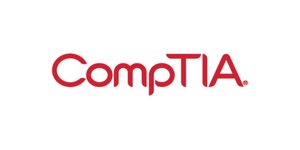DOWNERS GROVE, Ill., Aug. 31, 2015 /PRNewswire-USNewswire/ -- Students across America are settling in for another year of learning, with notebooks and tablets at the ready. In growing numbers, however, their tablets and notebooks are of the digital variety, according to CompTIA, the information technology (IT) industry association.
Here's a primer on how technology is impacting classroom learning, as measured in the CompTIA research report The Changing Classroom: Perspectives from Students and Educators on the Role of Technology, published in December 2014.
- A is for Achievement – Improving student performance and meeting achievement standards are the biggest benefits educators see from using technology in the classroom.
- B is for Behind – The main concerns of falling behind in the use of classroom technology are fears of not taking advantage of learning innovations (53 percent of educators surveyed) and falling behind in a digital economy (43 percent).
- E is for Employment – A net 90 percent of students say the use of technology in the classroom will be important in helping them get jobs in an increasingly digital economy.
- F is for Fun – Overwhelmingly, students believe technology makes learning more fun and interesting.
- G is for Game – One in five high school teachers incorporate game-based learning in their classroom. One-third of middle and high school students want more gaming simulations as part of the curriculum.
- M is for Millennial – Millennial teachers believe technology is more important in the classroom than their older colleagues. (96 percent of those under age 34 vs. 85 percent in the 35-54 age group.)
- P is for Positive – 75 percent of K-12 educators believe technology has a positive or very positive effect when applied to the education process.
- R is for Recruitment – Technology assets are an important part of student recruitment and fundraising, according to 65 percent of educators.
- S is for Skills – Most students rate their skill level with technology at average or above average. They'd like to improve their knowledge and skills, students cited computer troubleshooting, programming and coding and gaming simulations.
- T is for Tablet – Female students express a stronger preference for tablets and mobile e-learning apps. Male students prefer faster Internet speeds and more game-based learning simulations.
- W is for Wireless – 85 percent of classrooms have wireless network access, suggesting mobile devices are becoming the primary computing tool for students and teachers.
CompTIA and SIIA, the principal trade association for the software and digital content industry, have jointly launched the Smarter Schools Project. This initiative is dedicated to highlighting the positive impacts of technology in the classroom and the exciting ways that schools and families use technology to meet their needs. To learn more, visit http://smarterschoolsproject.com.
The CompTIA study The Changing Classroom: Perspectives from Students and Educators on the Role of Technology is an example of the free resources available from CompTIA just by becoming a registered user. To register visit http://www.comptia.org/about-us/our-story/membership.
Logo - http://photos.prnewswire.com/prnh/20130107/DC38135LOGO
SOURCE CompTIA
Related Links
WANT YOUR COMPANY'S NEWS FEATURED ON PRNEWSWIRE.COM?
Newsrooms &
Influencers
Digital Media
Outlets
Journalists
Opted In





Share this article